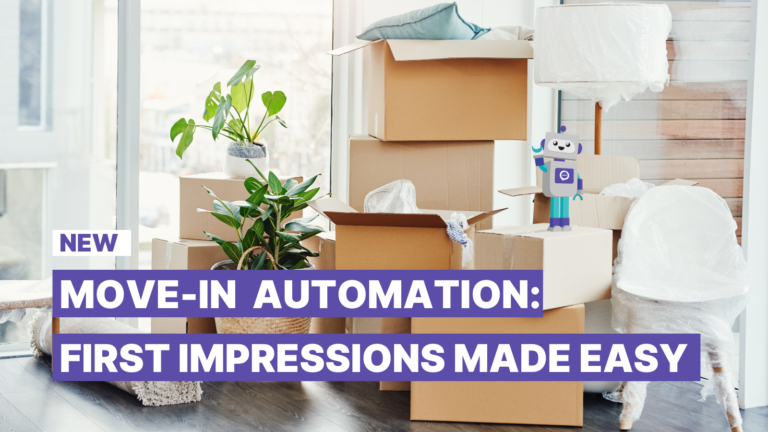To some, artificial intelligence conjures science fiction vibes, and chatbots sound just as threatening.
But the reality is that AI and chatbots are nothing new and they’re all around us. In fact, we interact with AI every day — from music and movie recommendations on apps like Spotify and Netflix, to Facebook’s facial image recognition capability, to Siri on iOS.
And now, the multifamily industry has harnessed Chatbot technology to create a smooth and seamless leasing process for residents and to make the jobs of leasing agents a bit easier.
However, chatbots are not here to take human jobs — it’s actually quite the opposite. Here are six common myths and misconceptions about chatbots and the real story behind each one.
Misconception #1: Chatbots will take jobs away from humans.
The truth: They will allow humans to do their jobs more efficiently
Chatbots are meant to perform a complementary role by automating monotonous and mundane tasks, allowing their human counterparts to handle more productive and important work.
Managing an apartment community is challenging and hectic, so empowering an apartment chatbot to cheerfully answer questions (often the same questions over and over), schedule apartment tours, and send rental applications means that your employees can focus on higher-level tasks like conducting tours and addressing resident complaints.
And since everyone knows that online apartment reviews are important, ensuring that your property managers and leasing agents have the time to help residents, both prospective and current, will help your apartment community’s online reputation remain intact.
Misconception #2: Chatbots trick people into thinking they’re human.
The truth: Trust is not possible without transparency
Chatbots are designed to have human-like conversations, but the goal isn’t to fool anyone into thinking they’re communicating with a person. The best chatbots own their identity, and they can even be programmed to play it up by telling a bot joke or two.
A study by Gartner found that transparency is the highest priority for customers, so attempting to present a chatbot as human can violate a customer’s trust. Prospective renters feel more comfortable knowing the truth, and knowing that a human isn’t far away if they’re not getting the answers they need. This leads us to the next myth.
Misconception #3: Chatbots can function independently
The truth: They work best in tandem with humans.
The basic back-and-forth can be left to the chatbot, such as questions about pet policies, amenities, and available floor plans.
But just as apartment chatbots can help property managers and leasing agents do their jobs, the reverse is also true: Chatbots function best when users have the option of communicating with a human if they have more complex questions that the chatbot isn’t able to answer to their satisfaction.
Prospects will get all of their questions answered either way — through AI or human intelligence — all without having to make a phone call.
Misconception #4: Chatbots don’t understand context
The truth: They can process intent thanks to advancements in AI
The first chatbot was called ELIZA and it was developed in 1966. It succeeded in carrying on scripted, rudimentary conversations, but it wasn’t able to provide any useful answers to many questions.
The chatbots of today use natural language processing and machine learning to understand human language, allowing them to carry on helpful chat conversations while also building language skills and vocabulary as time goes on. This means they’re able to comprehend user intent and give relevant responses, and they get smarter with every interaction.
Misconception #5: All chatbots are AI-driven
The truth: A chatbot may or may not use AI
Many chatbots are rule-based rather than AI-based, following an autonomous process similar to a decision tree. Currently there are three types of chatbots:
- Script-driven: These chatbots are programmed with scripts to trigger certain responses to questions.
- Interface-driven: These use natural language processing and are capable of more advanced interactions as time goes on.
- Hybrids: These use a combination of scripts and natural language processing, allowing the chatbot to handle a broader range of topics.
The Respage Chatbot is the most robust apartment chatbot available in the multifamily marketplace. With over 300,000 conversations, it is the smartest in the industry. It is easy to install and can be integrated with multiple platforms. Speak to our team to learn more!






